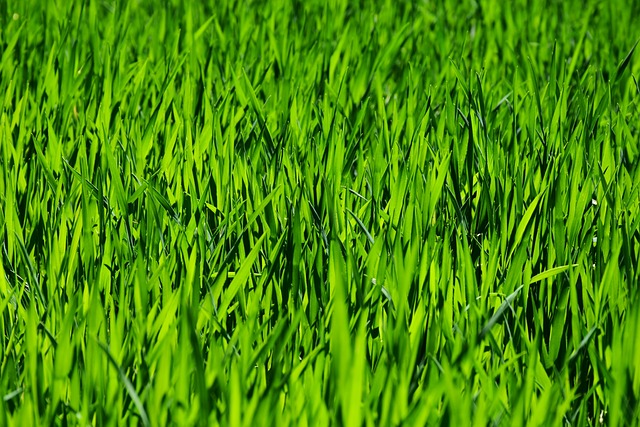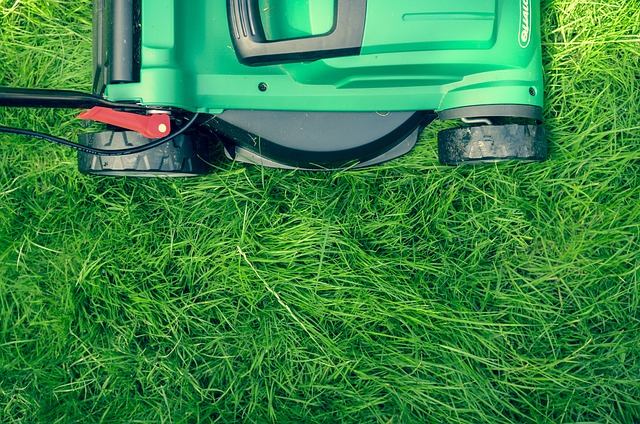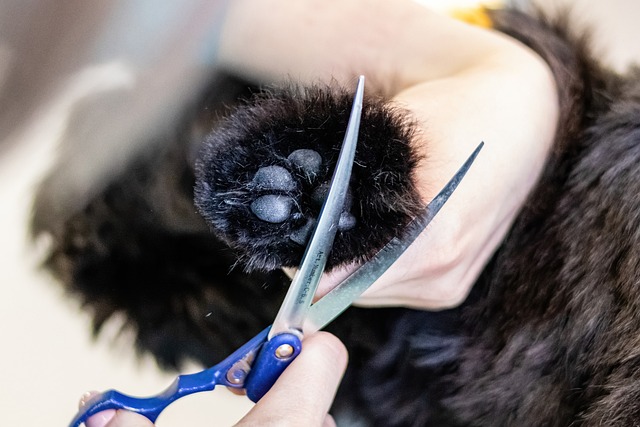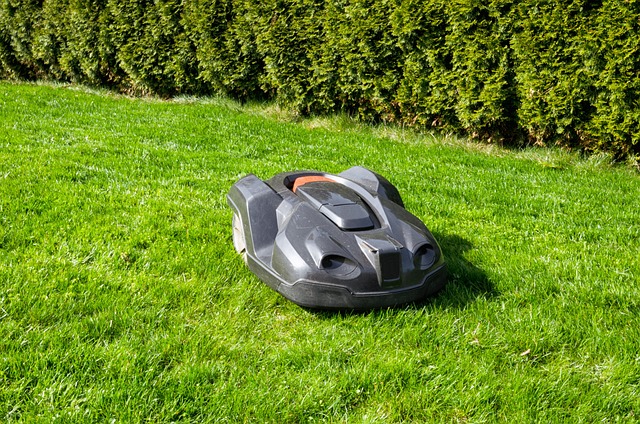Effective lawn care and landscaping are essential for maintaining a robust turf that is both visually appealing and resilient. A comprehensive approach that includes soil health management, precise fertilization tailored to local conditions and grass types, and regular mowing with sharp blades is crucial. Integrated Pest Management (IPM) practices are vital for sustainable pest and disease control, utilizing biological controls and mechanical measures alongside vigilant monitoring. Efficient irrigation systems that conserve water while encouraging deep root growth complement these practices. Aeration and overseeding can improve soil conditions and turf resilience against pests and diseases. Adhering to these best practices in lawn care and landscaping ensures a healthy, vibrant outdoor space that meets both practical and aesthetic needs, and is aligned with ecological sustainability principles.
Effective turf management is pivotal for maintaining a thriving, verdant landscape. This article delves into the nuanced art of lawn care and landscaping, offering insights on optimizing turf health through best practices. Explore the scientific aspects of soil management, including pH balance and tailored fertilization strategies to ensure lush, vibrant grass. Additionally, learn about Integrated Pest Management (IPM) techniques to protect your lawn from invasive species and diseases, ensuring a beautiful and resilient outdoor space year-round.
- Optimizing Turf Health: Best Practices in Lawn Care and Landscaping
- The Science of Soil: Understanding pH Balance and Fertilization for Lush Lawns
- Integrated Pest Management: Safeguarding Your Lawn from Invasive Species and Diseases
Optimizing Turf Health: Best Practices in Lawn Care and Landscaping

Lawn care and landscaping are integral components in maintaining healthy turf that withstands environmental stressors and aesthetic demands. To optimize turf health, professionals emphasize a holistic approach that considers soil conditions, climate influences, and grass species. A thorough understanding of the local environment is crucial for tailoring fertilization practices to provide the necessary nutrients without over-fertilizing, which can lead to environmental harm. Consistent mowing at the appropriate height for the turf type ensures a healthy lawn; sharp blades minimize stress on the grass and prevent disease. Irrigation systems should be efficient and well-timed, delivering water only as needed to conserve water resources while promoting deep root growth. Aeration and overseeding practices not only alleviate soil compaction but also introduce new grass varieties to strengthen turf resilience against pests and diseases. Integrated pest management strategies are essential for controlling insects and weeds, focusing on prevention and the use of environmentally responsible products when necessary. Regular scouting and monitoring allow for early detection and treatment, minimizing potential damage. By implementing these best practices in lawn care and landscaping, turf managers can achieve a lush, resilient landscape that serves both functional and aesthetic purposes.
The Science of Soil: Understanding pH Balance and Fertilization for Lush Lawns

Lawn care and landscaping professionals understand that maintaining a lush, vibrant lawn involves more than just routine mowing and watering. A fundamental aspect of effective lawn maintenance is mastering the science of soil. Soil pH balance plays a critical role in the health of grass and plants. It influences nutrient availability and soil structure, which are essential for optimal plant growth. Ideally, most turfgrass species thrive in slightly acidic to neutral soil with a pH range between 6.0 and 7.5. Professional turf managers conduct regular soil tests to monitor pH levels and adjust them using liming materials to alkaline soils or sulfur to acidic soils, ensuring the grass receives the nutrients it needs for robust development.
Fertilization is another key component in the care of lawns. A balanced fertilization program tailored to local soil conditions and turf species helps promote vigorous root growth, leaf development, and overall resilience against pests and diseases. Lawn care and landscaping experts employ a strategic approach to fertilization, considering factors such as climate, weather patterns, and the specific nutrient needs of different grass varieties. By understanding the intricate relationship between soil chemistry and plant physiology, these professionals can create a bespoke fertilization schedule that supports a healthy lawn ecosystem throughout the year. This expertise ensures that lawns are not only aesthetically pleasing but also environmentally sustainable, contributing to the health of the surrounding landscape.
Integrated Pest Management: Safeguarding Your Lawn from Invasive Species and Diseases

Maintaining a lush, healthy lawn requires a comprehensive approach to manage pests and diseases effectively. Integrated Pest Management (IPM) stands as a cornerstone in this endeavor, offering a proactive strategy that safeguards your lawn from invasive species and diseases without resorting to excessive or indiscriminate use of chemicals. This science-based approach emphasizes lawn care and landscaping practices that enhance the natural defense mechanisms of turfgrass. By monitoring pest and disease levels, IPM enables early detection and timely intervention, minimizing the reliance on chemical treatments. It involves a combination of cultural practices like soil management, proper watering, and fertilization, along with biological controls such as introducing beneficial insects or nematodes that prey on harmful organisms. Additionally, IPM incorporates mechanical and physical methods to manage pests, ensuring a more sustainable and environmentally friendly lawn care solution. Landscaping professionals skilled in IPM techniques can tailor a program to the specific needs of your lawn, promoting resilience and longevity while maintaining an attractive outdoor space.
Lawn Care and Landscaping professionals play a pivotal role in maintaining vibrant turf. By adhering to best practices in lawn care, understanding soil science for optimal pH balance and fertilization, and employing integrated pest management techniques, one can effectively safeguard their lawn from invasive species and diseases. Mastery in these areas not only contributes to the aesthetic appeal of any landscape but also ensures turf health and sustainability. Homeowners and landscapers alike are encouraged to apply these principles for lush, resilient lawns that stand as testaments to diligent care and knowledgeable management.
